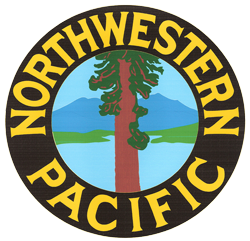From The Headlight July – August 2015
Central Pacific 29
A Journal Box, Burned Wall and Brake Cylinder
By Mike Manson
When the roundhouse roof fell onto B&O 20, one of the Morris journal boxes was shattered beyond repair. The cast iron Morris box has a spring steel lid that pivots around a bolt at one end and forms a good seal against dirt and rain. The trucks for CP 29 are nearing completion so we are searching in earnest for a replacement journal box.
The author recently visited the Roaring Camp Railroads in Felton, CA, in search of a Morris box. He found three in their parts collection, BUT the boxes are for arch bar trucks instead of passenger trucks. So the search continues.
The south end wall was burned by a 1970’s stove pipe flashover fire that occurred within the wall. Local firefighters had to cut open the outside wall. The damaged area was covered with a piece of plywood. At the time of the fire, inside the car the original wainscot boards had already been replaced with narrow tongue and groove boards. Some of these narrow boards were burned through.
Dave Dietz and the author removed the plywood and the small boards to evaluate the structural condition of the wall. While the window posts appear to be usable the end beam of the car has some rot below the door. After this area is repaired the missing boards will be replaced with pieces of the correct profiles. The Restoration Team disassembled the WABCO brake cylinder salvaged from B&O 20 and found it to be in usable condition. The brake cylinder’s various cast iron components were taken to a local machine shop where they were baked at 700⚬ then blasted with steel shot. After a wipe down with lacquer thinner the parts were painted black.
A new packing ring was installed on the piston to seal its rim inside the cylinder. The cylinder interior was coated with a special grease, then the piston and packing ring were inserted, and the cylinder pressure head was bolted onto the cylinder. The release spring and non-pressure head were placed over the piston rod, the non-pressure head was pushed down to compress the spring, and the cross-head was riveted onto the piston rod, thereby locking the assembly together. At that point the non-pressure head could be bolted to the cylinder.
We are still in need of a conductor’s valve and pressure gauge. If you can donate these items, please contact the author at mike_mnsn@yahoo.com.
CP 29 needs donations to our “Buy a Pound of Pedestal” campaign. Each donation of $10 will cover the prorated cost of the patterns, steel, sales tax, energy and labor needed to cast one pound of a pedestal for CP 29 and bring it to the De Carli Trolley Museum. Please send your donation today.









